This article was co-authored by Heather Richmond, MD. Dr. Heather Richmond, MD is a board certified Dermatologist at Dermatology and Laser Surgery Center in Houston, Texas. With over nine years of experience, Dr. Richmond specializes in comprehensive dermatology including medical, surgical, and cosmetic procedures. She graduated cum laude from Yale University with a BA in Molecular, Cellular, and Developmental Biology. She earned her MD from the University of California, Irvine School of Medicine, where she was inducted into the Alpha Omega Alpha Honor Medical Society. She completed her Internal Medicine internship at Cedars-Sinai Medical Center and her Dermatology residency at The University of Texas MD Anderson Cancer Center in Houston. Dr. Richmond is a fellow of the American Academy of Dermatology and is a member of the American Society for Dermatologic Surgery, American Society for Laser Medicine and Surgery, and the Texas and Houston Dermatological Societies.
There are 17 references cited in this article, which can be found at the bottom of the page.
This article has been viewed 13,490 times.
The Ordinary has an amazing range of effective and affordable skincare, but it can be overwhelming to choose the right products for your skin type. Whether you have sensitive, dry, or acne-prone skin, we’re covering everything you need to know about the Ordinary products! If you're ready for the best skin of your life, keep reading for a step-by-step tutorial on how to layer each Ordinary product in the morning and evening.
Things You Should Know
- Cleanse your face to remove any impurities, and then determine your skin type to choose the right exfoliator.
- For maximum skincare benefits, layer your products from thinnest to thickest consistency: apply water-based serums before waterless (anhydrous) ones.
- As the final step of your routine, apply moisturizer to protect the skin barrier and give your face a radiant glow.
- Avoid using retinoids, vitamin C, and acids (AHAs or BHAs) at the same time. They can irritate your skin and increase sun sensitivity.
Steps
Layering Products
-
1Cleanser. To remove any impurities and excess oils from your face, use the Ordinary Squalane Cleaner as the first step in your skincare routine: warm a dime-sized amount of product in your hands until it melts into an oil-based consistency. Massage the cleanser onto your face, and then rinse off with warm water. Pat your face dry with a clean towel.[1]
- If you’re experiencing breakouts, use the Salicylic Acid 2% Masque after cleansing. Apply an even layer on your face, wait 10 minutes, and then rinse with warm water. Salicylic acid improves skin texture by targeting clogged pores, so it’s perfect for days when your skin’s extra congested.[2]
- Cleanse your face twice a day–in the morning and evening; if you’re out of time and can’t do both, prioritize washing your face at night to remove any bacteria collected on your face during the daytime.[3]
-
2Exfoliator. First, determine your skin type to choose the perfect Ordinary exfoliator.[4] Exfoliation is the key to smooth, glowing skin, but incorrect usage can cause irritation or redness: avoid applying exfoliator near the eye area, and always follow the instruction label for the best results.
- All skin types: Glycolic Acid 7% Toning Solution, AHA 30% + BHA Peeling Solution
- Dry skin: Lactic Acid 5% + HA, Mandelic Acid 10% + HA, and Lactic Acid 10% + HA
- Acne-prone skin: Salcylic Acid 2% Solution
- Be sure to patch test your exfoliator to ensure it won’t irritate your skin.
- If you're unsure of your skin type, consult a dermatologist to help you choose the most effective skincare products.
Advertisement -
3Face serums. Serums deliver active ingredients directly into the skin but apply thinner, water-based serums before anhydrous (waterless) ones for maximum absorption and skincare benefits. When using several serums with the same consistency, order them by importance to target your skin concerns. For example, salicylic acid serums reduce breakouts, so apply those before hydrating ones, like hyaluronic acid serums, when treating acne-prone skin.[5]
- Water-based serums for all skin types: Niacinamide 10% + Zinc 1%, Hyaluronic Acid 2% + B5, Multi-Peptide + HA, “Buffet” + Copper Peptides 1%
- Anhydrous serums for all skin types: Pycnogenol 5%, Ascorbic Acid 8% + Alpha Arbutin 2%, Resveratrol 3% + Ferulic Acid 3%, 100% Plant-Derived Squalane, Retinol 0.5% in Squalane, Retinol 1% in Squalane
- Anhydrous serums for dry skin: Ascorbyl Tetraisopamitate Solution 20% + in Vitamin F, Granactive Retinoid 5% in Squalane
- Using too many products can irritate your skin, so start with one serum before adding additional ones. Most dermatologists recommend a maximum of 3 serums for a daily skincare routine.[6]
-
4Face oil. If you have normal or dry skin, dab 3-4 drops of the Ordinary’s face oil onto your face for a boost of hydration. With clean fingers, gently rub the oil until it absorbs into the skin.
- All skin types: 100% Cold-Pressed Virgin Marula Oil, 100% Organic Cold-Pressed Rose Hip Seed Oil, 100% Organic Virgin Sea Buckthorn Fruit Oil, 100% Organic Cold-Pressed Borage Seed Oil
- Dry skin: “B” Oil
- Facial oil acts as a barrier to reduce water loss from the skin, but most dermatologists don’t recommend it if you have oily skin–it can clog your pores and increase acne.[7]
- If the oil doesn’t absorb into your skin, try mixing a few drops of it into your moisturizer instead of applying it directly to your face.
-
5Moisturizer. As the final step of your skincare routine, apply a nickel-sized amount of the Natural Moisturizing Factors + HA moisturizer over your face and neck. Moisturizer restores the skin barrier, which protects you from free radicals, environmental toxins, and infections.[8]
- The Ordinary’s moisturizer contains beneficial fatty acids–the building blocks of healthy cell membranes. Fatty acids are essential to smooth, functioning skin because they prevent water loss and reduce inflammation.[9]
- Even if you have oily or acne-prone skin, you need to moisturize your face daily to keep your skin hydrated.[10]
- Hot water strips moisture out of your skin, so be sure to moisturize after a shower, shave, or exfoliation treatment.[11]
Example Routines by Skin Type
-
1Oily skin. Some people need a drastically different morning and evening skincare routine to address their skin concerns, but luckily, oily skin is pretty low maintenance. Choose “oil-free” products that are still hydrating with ingredients like niacinamide, salicylic acid, and retinoids; these ingredients balance your oil production and help prevent breakouts.[12]
- Morning: After cleansing, apply a niacinamide serum to minimize oils throughout the day.[13] Follow-up with a moisturizer to restore the skin barrier and keep your skin hydrated.
- Night: Cleanse your face to remove oils and dirt, and then follow-up with the Salicylic Acid 2% Masque to unclog your pores and target any breakouts. Finish with a niacinamide serum to improve skin hydration, and seal everything with a moisturizer.
-
2Dry skin. If you have dry skin, look for products that prevent water loss and protect the skin barrier. Ceramides, hyaluronic acid, and glycerin are excellent hydrating ingredients, but avoid retinoids and alpha-hydroxy acids (AHAs)–they prevent the skin from retaining its natural oils. During the evening, use thicker moisturizing products to combat dryness overnight.[14]
- Morning routine: Cleanse to remove any remaining skincare products on your face from the night before. Apply 3-4 drops of hyaluronic acid serum to maintain skin hydration throughout the day, and finish off with a moisturizer.
- Night routine: After cleansing, apply a hyaluronic acid serum for a boost of hydration, and follow-up with a face oil to trap moisture into the skin. If your skin is feeling particularly dry, finish off with a moisturizer to lock in hydration overnight.
-
3Aging skin. Most people with aging skin have a different morning and evening routine to target their skincare concerns. To address fine lines and wrinkles, apply products with antioxidants and peptides during the daytime. Powerhouse ingredients like alpha-hydroxy acids (AHAs) and retinoids are known to make the skin appear younger, but make sure to apply them at night to avoid increasing skin sensitivity.[15]
- Morning routine: After cleansing, use the multi-peptide serum to target crow’s feet and other signs of aging. Finish with the Natural Moisturizing Factors + HA moisturizer to protect and hydrate your skin throughout the day.
- Night routine: Cleanse to remove any makeup, dirt, and oils from the daytime, and use the Multi-Peptide + HA serum to hydrate the skin and reduce signs of aging. Apply a few drops of the Granactive Retinoid 5% in Squalane: it increases cell-turnover to smooth and tone the skin.
-
4Sensitive skin. To combat sensitivity, choose gentle products that hydrate and soothe the skin. Using too many products can irritate your skin, so aim for a simple routine: cleanse, hydrate, and moisturize. Stick to the same routine morning and evening to avoid stressing out your skin, but feel free to throw in an additional hydrating product on days where you feel especially dry.[16]
- Morning routine: Cleanse your face to prepare it for other skincare products. Apply the Hyaluronic Acid 2% + B5 serum to maintain hydration throughout the day, and finish your AM routine with a moisturizer to protect your skin from environmental stressors.
- Night routine: After cleansing, apply the 100% Plant-Derived Squalane face oil to support your skin’s natural moisture barrier. Oils absorb more slowly than serums, so they’re ideal for nourishing the skin overnight. Seal all of your skincare products with a moisturizer to reduce water loss and calm your skin.
-
5Rosacea-prone skin. Redness and flushing are the most common symptoms of rosacea–a skin condition that impacts over 14 million people in the U.S. alone.[17] When treating rosacea, the key is to stick to a consistent skincare routine that helps with redness and calms the skin. Similar to sensitive skin, the goal is to cleanse, hydrate, and moisturize, so try to use as few products as possible.
- Morning routine: After cleansing, apply the Azelaic Acid Suspension on your face: it’s cream-like serum that targets significant redness and uneven skin tone, so there’s no need to follow-up with moisturizer.
- Night routine: Cleanse to remove any makeup or dirt. If your skin is feeling especially dry, apply a few drops of the hyaluronic acid serum to hydrate the skin, and then finish off with the Azelaic Acid Suspension.
Product Combinations to Avoid
-
1Retinoids & vitamin C. Both active ingredients are known to fade dark spots and brighten your complexion, but they also increase skin sensitivity.[18] Alternate your products daily to minimize skin damage: apply vitamin C in the morning, and then use retinol in the evening the following day.
- Be sure to apply suncare products when using retinoids or vitamin C.
- Always use retinoids at night: they can break down during the day, becoming less effective.
-
2Retinoids & acids (AHAs/BHAs). Combining retinol with alpha-hydroxy acids (AHAs) or beta-hydroxy acids (BHAs) can cause serious dryness and irritation, so most dermatologists do not prescribe both ingredients at the same time.[19] Instead of using retinoids and acids together, choose one product that works best for your skin type:
- Normal to dry skin: Use AHAs for gentle exfoliation that still retain your skin’s moisture. AHAs work at the skin’s surface level to remove dead skin cells, so it’s not overly-drying or harsh on dry skin.
- Oily skin: Try BHAs to improve skin texture and clarity. BHAs work both at the surface level and deep within the pores to remove any congestion.
- Aging and acne-prone skin: Choose retinoids for fresh, evenly-toned skin. Retinoids are antioxidants that increase cell turnover, declogging pores, reducing lines and texture, and calming the skin.
-
3Vitamin C & acids (AHAs/BHAs). Both vitamin C and acids exfoliate the skin, so it’s best to avoid using them on the same day, especially if you have sensitive skin. Use vitamin C in the morning, and exfoliate with acids 1-3 times per week to maintain clear, glowing skin.[20]
References
- ↑ https://www.aad.org/public/everyday-care/skin-care-basics/care/apply-skin-care-certain-order
- ↑ https://medlineplus.gov/druginfo/meds/a607072.html
- ↑ https://www.aad.org/public/everyday-care/skin-care-basics/care/face-washing-101
- ↑ https://www.aad.org/public/everyday-care/skin-care-secrets/routine/safely-exfoliate-at-home
- ↑ https://health.clevelandclinic.org/proper-skin-care-product-order
- ↑ https://www.aad.org/public/everyday-care/skin-care-basics/care/apply-skin-care-certain-order
- ↑ https://www.aad.org/public/everyday-care/skin-care-basics/dry/oily-skin
- ↑ https://www.aad.org/public/everyday-care/skin-care-basics/dry/pick-moisturizer
- ↑ https://lpi.oregonstate.edu/mic/health-disease/skin-health/essential-fatty-acids
- ↑ https://www.aad.org/public/everyday-care/skin-care-basics/dry/oily-skin
- ↑ https://www.utmedicalcenter.org/the-importance-of-moisturizing
- ↑ https://health.clevelandclinic.org/skin-care-ingredients-explained
- ↑ https://pubmed.ncbi.nlm.nih.gov/16766489
- ↑ https://www.aad.org/public/diseases/a-z/dry-skin-overview
- ↑ https://www.mayoclinic.org/diseases-conditions/wrinkles/in-depth/wrinkle-creams/art-20047463
- ↑ https://www.houstonmethodist.org/blog/articles/2022/feb/sensitive-skin-symptoms-common-triggers-how-its-treated
- ↑ https://www.aad.org/public/diseases/rosacea/what-is/causes
- ↑ https://www.aad.org/public/everyday-care/skin-care-secrets/anti-aging/retinoid-retinol
- ↑ https://www.aad.org/public/everyday-care/skin-care-secrets/anti-aging/retinoid-retinol
- ↑ https://youtu.be/YtP8UiUW7uo?t=799
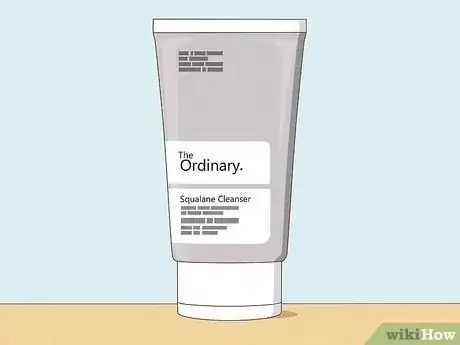

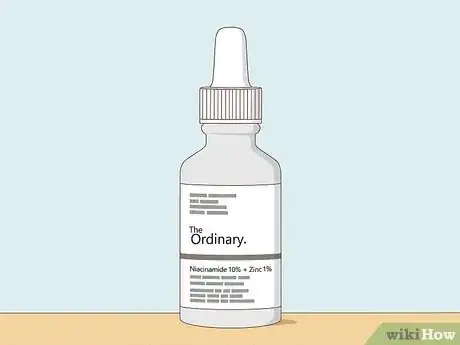
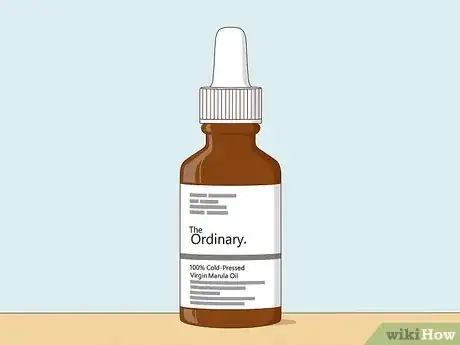
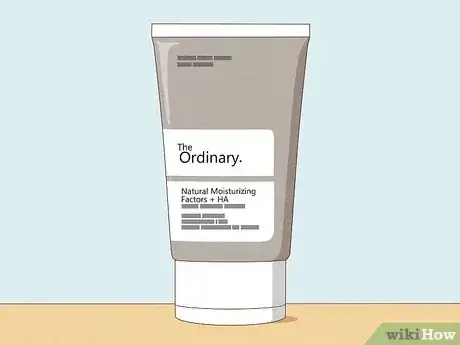
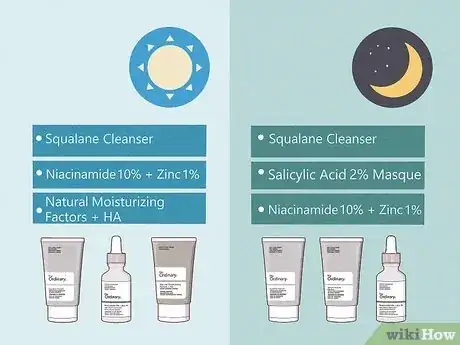
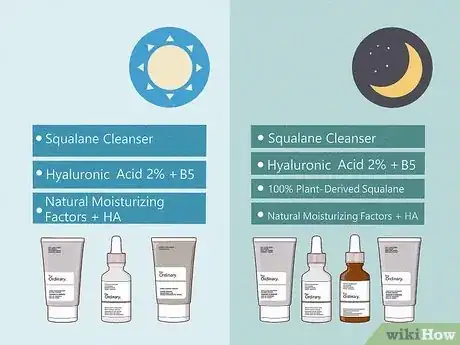

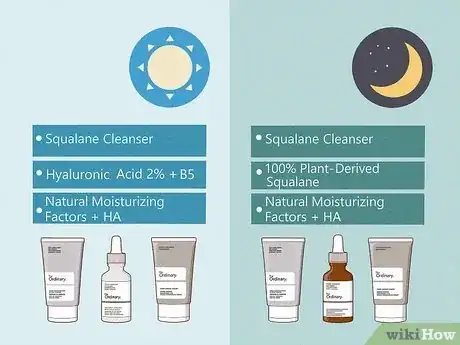
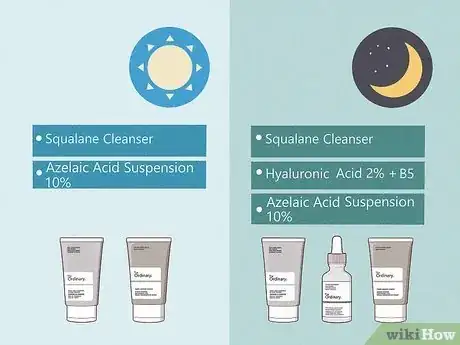
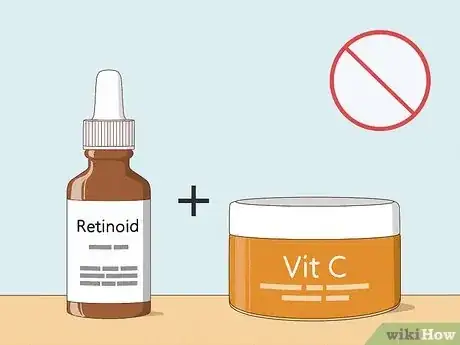

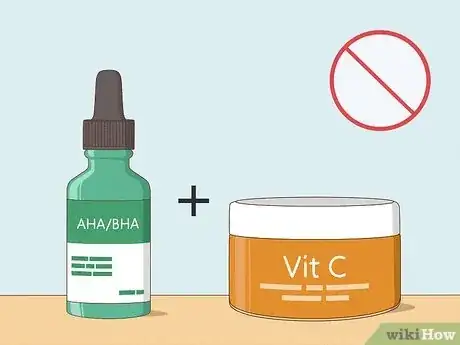






-Step-12-Version-3.webp)



















































